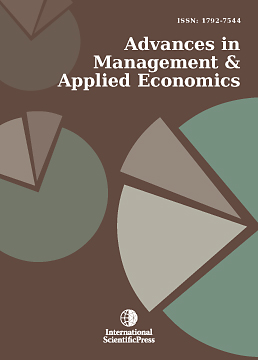Advances in Management and Applied Economics
Effectiveness of Public Action Health in Morocco: A Temporal and Transverse Analysis
-
 [ Download ]
[ Download ]
- Times downloaded: 11217
-
Abstract
The overall aim of this study is to assess the impact of government policies on the public health and to present the trends of health indicators in Morocco. To carry out the study, we initially retained 27 variables which concern three levels in sixteen areas of the kingdom: products, results and impacts. To choose the most relevant variables, we adopted a theoretical and empirical approach. It consists successively on:(i) identifying, among the explanatory variables having a theoretical link with the impact variables, (ii) calculating the Euclidean distances by the K-Means method to achieve a correct classification of the explanatory variables between the level of products and results compared to impact variables, (iii) carrying out an analysis in principal components (ACP) to retain only the explanatory variables, most correlated having a theoretical or logical bond with each impact variables, (iv) specifying the regression models for panel data, to test the existence of regional differences (fixed effects models or random effects models). The main findings of this study shows thatthe low level of expenditure devoted to the care of health and the defective allowance of the resources result in inefficiencies in the allowance and the use of the resources of the private expenditure. Moreover, significant inequalities still exist at the regional level, in particular in the financing andthe access to the establishments and general practitioners of the Network of the Care of basic Health (RSSB). The study highlights also the importance to continue the efforts of generalizing access to health care and among the general population and to improve its output. It proves also the need to further coordinate between the various stakeholders (public and private sectors) to set up modern and generally efficient health policies.
